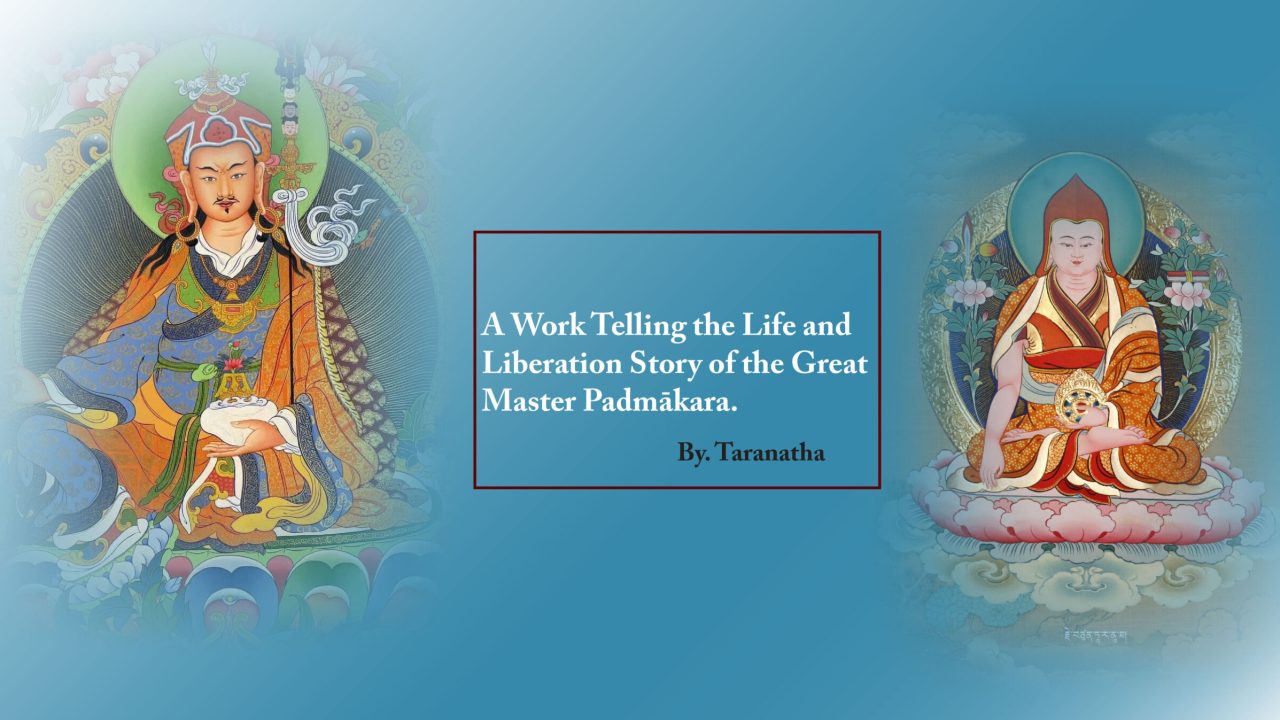Part 18
The Master also subdued the yakṣa, rākṣasas and evil nāga of that land. The protector deity of Drāmiḍa’s king was a violent and malicious preta called Varpaté. The Master knew that if he tamed the king, this spirit would be tamed at the same time. He thought to himself, “In order to spread the teachings of the Buddha, I must also tame these humans.” The Master thus settled in a forest near the king’s palace. Through the power of his meditative concentration, the Master repeatedly summoned the kings, queens to serve as consorts in the maṇḍala. When the king realized that his queens were missing, he disguised himself as an ordinary person, went after them, and watched them as they surrounded the Master. In the morning, the king and his army, bearing all sorts of weapons, came to destroy the Master. The Master merely threw some mustard seeds at them, whereupon the weapons of the king and his retinue burst into flame, blood flowed from their limbs, they became paralyzed, speechless, and thoroughly confused. They stayed like this for three days. Then, reaching the brink of death, they prayed and supplicated the Master. He cleansed them with water from his vase, and they were instantly restored to health. The king and his retinue prostrated at the Master’s feet and said they would do whatever the Master said, at which he commanded, “Establish the teachings of the Buddha!”
The king invited learned teachers from Magadha—a teacher of Vinaya, another of Sūtra and yet another to teach the Abhidharma. He had three temples built, called Bidha, Ardhā and Sudhā, and the Master performed the consecration ceremonies. The Master then explained the three baskets of teachings and the methods of practice until they became firmly established. The Master taught the vehicle of the sūtra tradition, but not much else in that country. To the king and his retinue, he gave many Dharma instructions. To six fortunate students, he explained the six tantras, teaching the completion phase and yogic activity many times. Those six students gained accomplishment. In the different regions, he built five or so small temples, and it is said they were completed in one hour, and all at the same time. The Master remained there for about twelve years, until finally, using his Dharma robes for wings, he lifted into the sky, departing for Cāmara in the south west, the island of the rākṣasas. I wonder whether these twelve years were actually half-years.
These days, in the island of Drāmiḍa, The Secret Moondrop Tantra continues to be taught and practised widely. This represents a tradition that originated only with the Master. This is so also with the great tantra The Ornament of The Vajra Essence[73] and the tantras of Vajrapāṇi, Vajragāndhārī, Yamāntaka, Hayagrīva, Mahākāla, and the Seven Mātṛkās, along with many other, minor tantras. There can be seen even now in that country a group called the Mahāga, who follow only the venerable master Jñānapāda and consider only his four heart sons’ teachings as important. They have therefore spread, very extensively, the tradition of the Master Padmākara, namely, the Hevajra and Śrī Paramādhya[74] and those mentioned above. You can also find commentaries that are connected with those tantras and the pith instructions of Guhyasamāja written by the Master.Done
